“Finding Hidden Flowers” Among Wildflowers and Spring Blooms Jeonju Arboretum, the Spirit of Spring

The “Messenger of Spring,” winter aconite, has opened its yellow blossoms first at Jeonju Arboretum, marking the beginning of spring.
It may still be early for spring flowers, but with a close look, you can discover pretty wildflowers that make their presence known despite being low to the ground.
“Delivering spring with ‘Finding Hidden Flowers’ at Jeonju Arboretum.”


Looking for wildflowers and spring flowers in photos.
Why not plan a trip to ‘Jeonju Arboretum’?

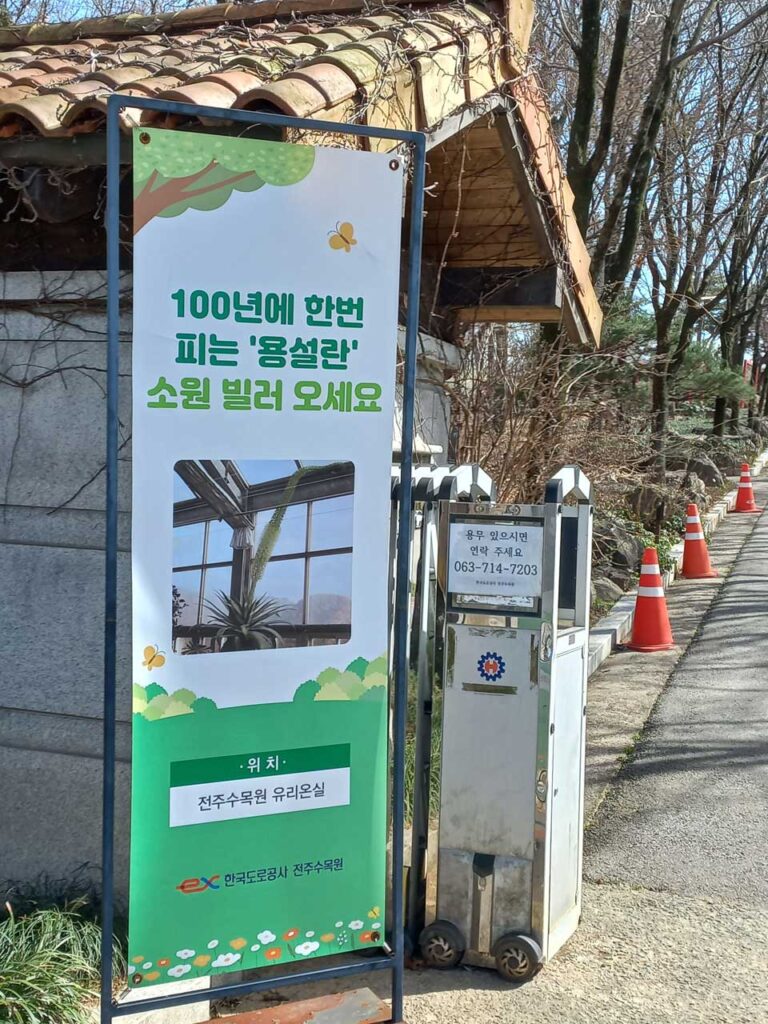
Jeonju Arboretum operates from Tuesday to Sunday, 9 AM to 6 PM, and is closed on Mondays and during the Lunar New Year and Chuseok holidays. Please note this when visiting.
If you park across from the main entrance of Jeonju Arboretum and enter, you’ll see a photo of the ‘Century Plant,’ was a recent highlight. The Agave americana inside the glass greenhouse is a must-see.
Our personal “Finding Hidden Flowers” search begins at the main entrance of Jeonju Arboretum.

Have you spotted the “Messenger of Spring,” the winter aconite?
Winter aconite, blooming with yellow flowers, is found on either side of the entrance’s flower beds.
The winter aconite, symbolizing happiness and health and written with the characters for ‘fortune’ and ‘longevity,’ emerges through the ice from February to March, earning the nickname ‘ice-breaker flower,’ and enters dormancy in May when other plants start to show their new leaves.

Spring’s wildflowers might be small and not immediately visible.
Paying attention allows you to find the beautiful aspects of these small wildflowers.


Beyond the winter aconite, you can see winter jasmine, a flower that signifies the arrival of spring.
In Japan, because it blooms early like the plum, it’s called “early plum,” and in the West, it’s known as winter jasmine, resembling forsythia and signaling spring.
Winter jasmine flowers beautifully near the entrance of Jeonju Arboretum and near the herb greenhouse entrance.




As you head towards the hydrangea garden and the herb garden, you’ll encounter the ‘prosperous flower’ with its distinctive shape. The prosperous flower, in yellow and gold, has a somewhat crinkled form and measures about 2cm in length.
It’s called ‘prosperous flower’ because its bloom appears abundant and full.




In early March, the white and red plum blossoms in Jeonju Arboretum are in their most beautiful state.
Seeing these two trees bloom together compels you to stop and take photos.

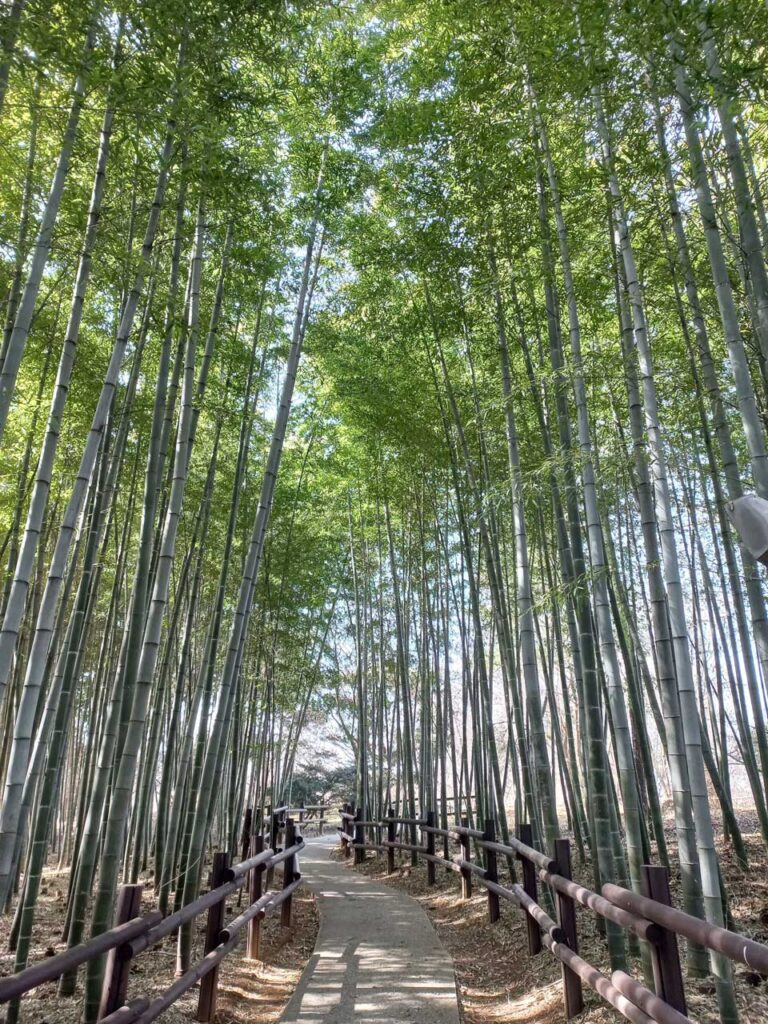
The ‘Bamboo Garden’ at Jeonju Arboretum is always a lovely place to visit.
Bamboo, adored as one of the “Four Gentlemen” alongside plum, orchid, and chrysanthemum for its evergreen appearance and hollow inside, representing purity, has always been cherished.
There are 52 varieties of bamboo planted in the Bamboo Garden of Jeonju Arboretum.
You can certainly try for that perfect photo in a bamboo forest path, surrounded by varieties like dwarf bamboo, giant bamboo, black bamboo, among others.

En route to see the ‘Century Plant’, which is said to bloom once every hundred years, I unexpectedly encountered ‘Korean Winter Hazel’.
‘Korean winter hazel’, a species native to Korea and frequently found in the Jirisan area, typically blooms from the end of March to April. Interestingly, it seemed to bloom a bit early for those looking for the early signs of spring.
It’s known as one of the trees that signal the start of spring, alongside forsythia and Cornus officinalis.


After passing the ‘Rose Terrace’, we moved into the glass greenhouse where the ‘Century Plant’ resides.
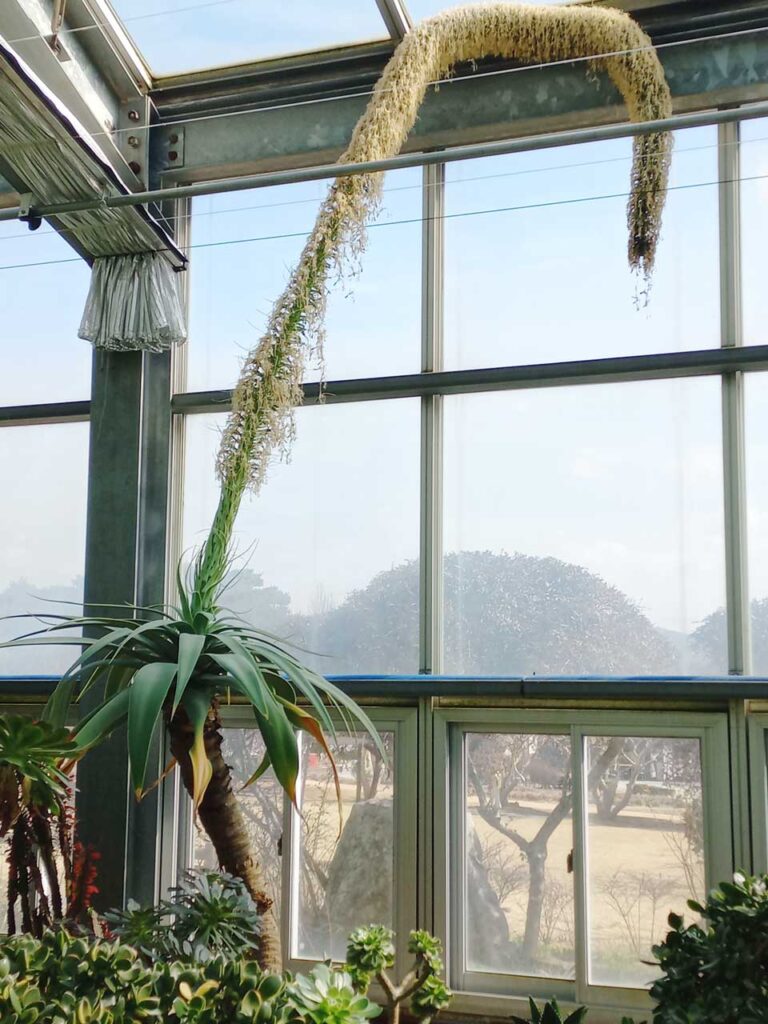

This is the ‘Century Plant (Agave americana)’, famed for its rare blooming cycle of once every hundred years.
Nearby the blooming Century Plant, another one is visibly still in the growing phase.
It appears that the experience of seeing this one bloom will have to be passed to the next generation.
I wonder, could we perhaps stumble upon another blooming Century Plant at Jeonju Arboretum?



As one would expect in a glasshouse, it was filled with an array of flowers, fruit trees, and cacti. Can you guess what the fruit in this photo is?

It’s a ‘grapefruit’, from a tree in the citrus family.
The glasshouse presents a fascinating view with its white, elongated grapefruit flowers, the green fruits, and the ripe yellow grapefruits.


The full double flowers of Calandiva and the bright red berries of Ardisia are quite attractive too.


The plant that captured my attention inside the glasshouse was ‘Pink Rock Orchid’.
The pink rock orchid, sharing space with large trees, carries the message of love, ‘I love you’.
This gentle, shy declaration closely mirrors the nature of pink rock orchid.


To conclude, I’d like to introduce ‘Helleborus’ and ‘Wintersweet’.
‘Helleborus’, a winter-blooming plant also known as ‘Christmas Rose’, thrives in the cold and symbolizes ‘memories’.
The connection between ‘Christmas Rose and memories’ is notably strong.

By heading towards the teaching materials center opposite the education and promotion hall, one can discover ‘Wintersweet’, with its pointed-leaf, yellow flowers.
The name ‘Wintersweet’ refers to plum blossoms that emerge in the early lunar month.

I’ve introduced to you ten flowers: Winter aconite, Winter jasmine, White plum blossom, Red plum blossom, Century plant, Korean winter hazel, grapefruit, Pink rock orchid, Helleborus, and Wintersweet.
A visit to Jeonju Arboretum in March offers a chance to see a range of flowers heralding spring, from the ‘Messenger of Spring’, the winter aconite, to the ‘Christmas Rose’, known as Helleborus.
Experience a warm March at Jeonju Arboretum, a beacon of spring’s arrival.
📍 Korea Expressway Corporation Arboretum (Jeonju Arboretum )
Jeonju Arboretum, 462-45 Seongbok-ro, Deokjin-gu, Jeonju-si, Jeollabuk-do

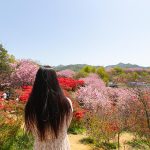
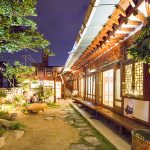

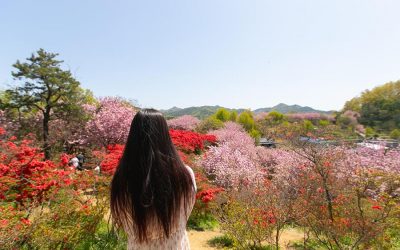

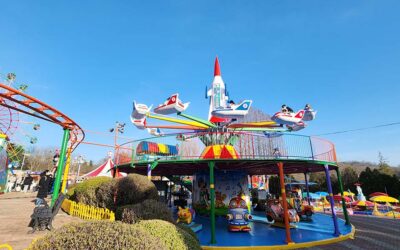
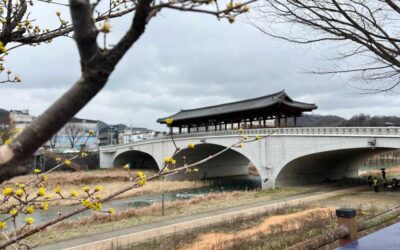
Recent Comments